1. Personalized Viewing Recommendations
AI algorithms analyze viewers' watching habits, preferences, and even mood to suggest shows and movies tailored to individual tastes, significantly enhancing content discoverability and the viewing experience.
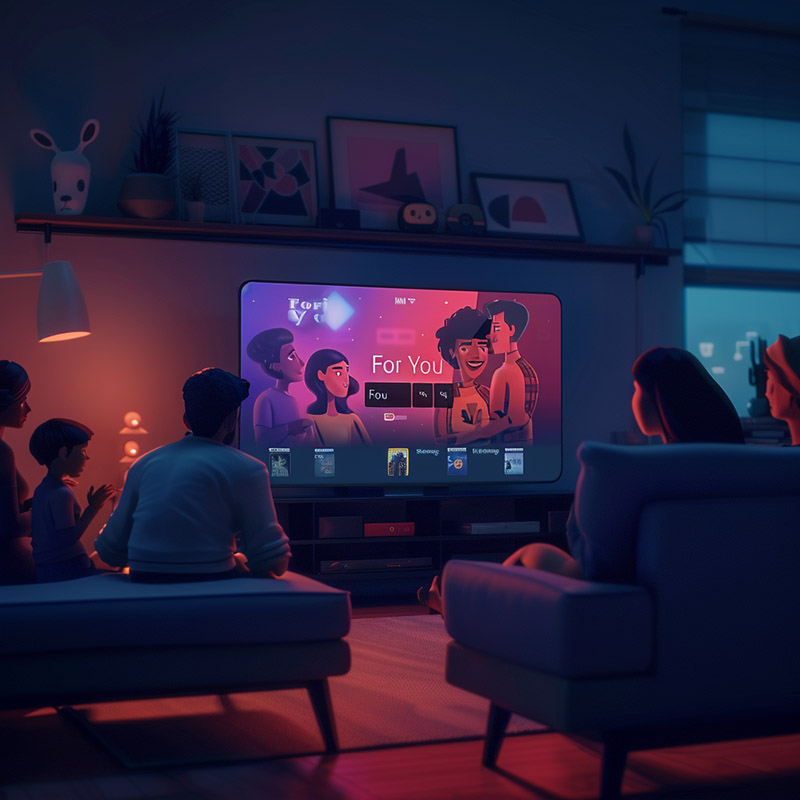
Deciding What to Watch Before AI
Viewers had to manually sift through extensive catalogs of content across multiple platforms, often relying on generic top ten lists or the limited recommendations of friends and family. This process was time-consuming and frequently resulted in less-than-ideal choices that did not align with individual preferences.
Deciding What to Watch After AI
AI-driven personalized viewing recommendations have transformed content discovery, making it a tailored and efficient process. By analyzing viewing habits, preferences, and even the time of day, AI curates a list of shows and movies that align precisely with the viewer's tastes. This ensures that viewers spend less time searching and more time enjoying content that resonates with them, significantly enhancing the overall viewing experience.
2. Intelligent Search Functions
Advanced AI-driven search functionalities understand natural language queries and context, allowing viewers to find content through voice commands or typed searches more efficiently, even with vague or partial information.
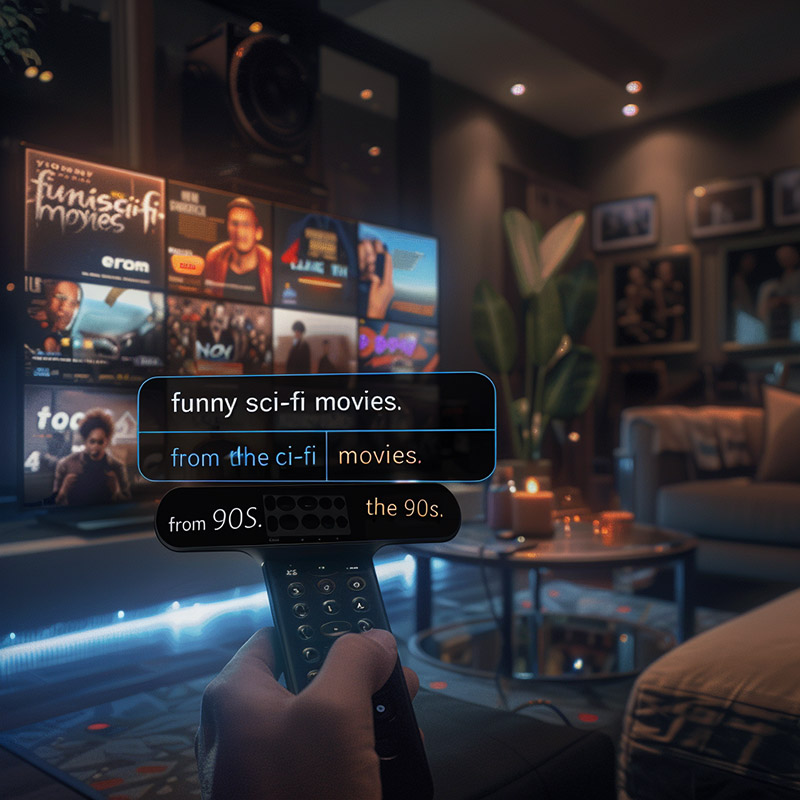
Finding Shows Before AI
Searching for content often required exact titles or keywords, making it challenging to find shows or movies when details were vague or forgotten. This limitation made content discovery frustrating and inefficient, especially when trying to explore new genres or find content based on themes or actors.
Finding Shows After AI
AI-enhanced intelligent search functions have revolutionized how viewers find content, understanding natural language queries and context. Viewers can now search using plot details, character names, or even quotes, with AI accurately interpreting the request and quickly surfacing relevant results. This seamless search experience encourages exploration and simplifies finding desired content.
3. Automated Content Curation
AI curates personalized playlists and thematic channels based on viewers' interests and viewing history, providing a bespoke entertainment experience that keeps content fresh and engaging.

Organizing Shows Before AI
Content curation was largely a manual process, with viewers needing to create their own playlists or rely on static, pre-made lists that didn't adapt to changing preferences or moods. This often led to a repetitive viewing experience and missed opportunities to discover new content.
Organizing Shows After AI
With AI, automated content curation delivers dynamic playlists and thematic channels tailored to viewers' evolving interests. This proactive approach keeps the viewing experience fresh and engaging, encouraging the discovery of new shows and movies while ensuring that content aligns with current preferences and moods.
4. Enhanced Picture Quality
AI technologies upscale video resolution in real-time, improving picture quality on older or lower-quality content, ensuring viewers enjoy the best visual experience possible, regardless of the source.

Picture Quality Before AI
Older or lower-quality content often suffered from poor resolution and clarity when viewed on modern high-definition screens, detracting from the viewing experience. Viewers had to accept the limitations of the source material, which could be especially noticeable with classic films or user-generated content.
Picture Quality After AI
AI technology now enhances picture quality in real-time, upscaling resolution and improving clarity for older or lower-quality videos. This allows viewers to enjoy classic films and other content in near high-definition quality, breathing new life into old favorites and ensuring a consistent viewing experience across all content.
5. Adaptive Streaming
AI optimizes streaming quality based on internet speed and viewing device, reducing buffering times and adapting video quality to ensure a smooth viewing experience without compromising on picture quality.
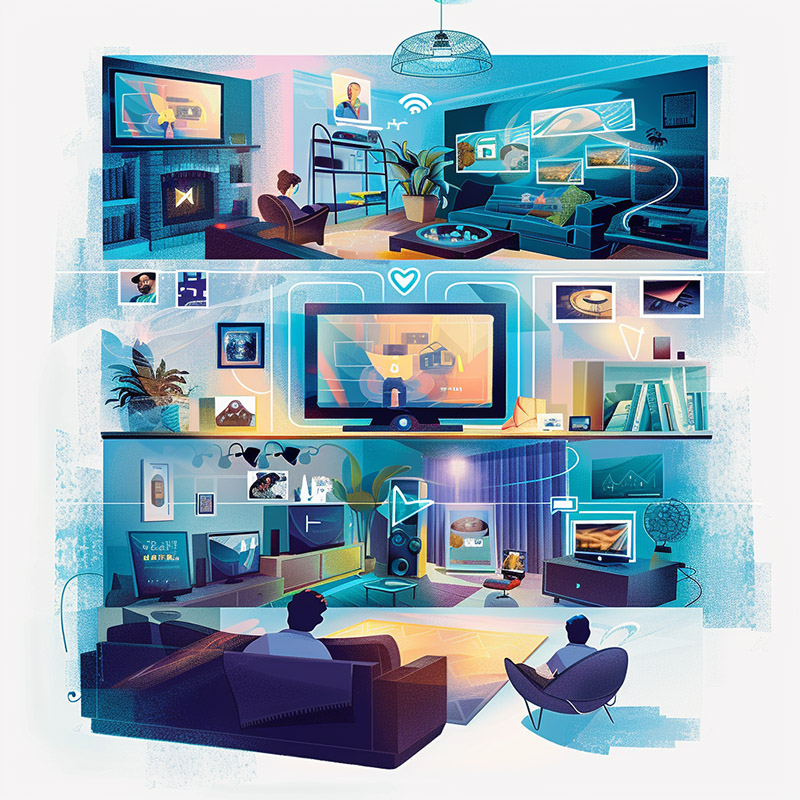
Streaming Before AI
Streaming experiences were often marred by buffering, low-quality resolution, and interruptions, especially during peak internet usage times. This inconsistency in streaming quality could frustrate viewers and detract from the enjoyment of content.
Streaming After AI
AI-powered adaptive streaming dynamically adjusts video quality based on real-time internet speed and viewing device capabilities, minimizing buffering and interruptions. This ensures a smooth streaming experience, maintaining optimal picture quality without sacrificing performance, regardless of network fluctuations.
6. Voice-Activated Controls
AI-powered voice recognition allows viewers to control their television and navigate content through voice commands, offering a hands-free, intuitive way to search for shows, adjust volume, and more.
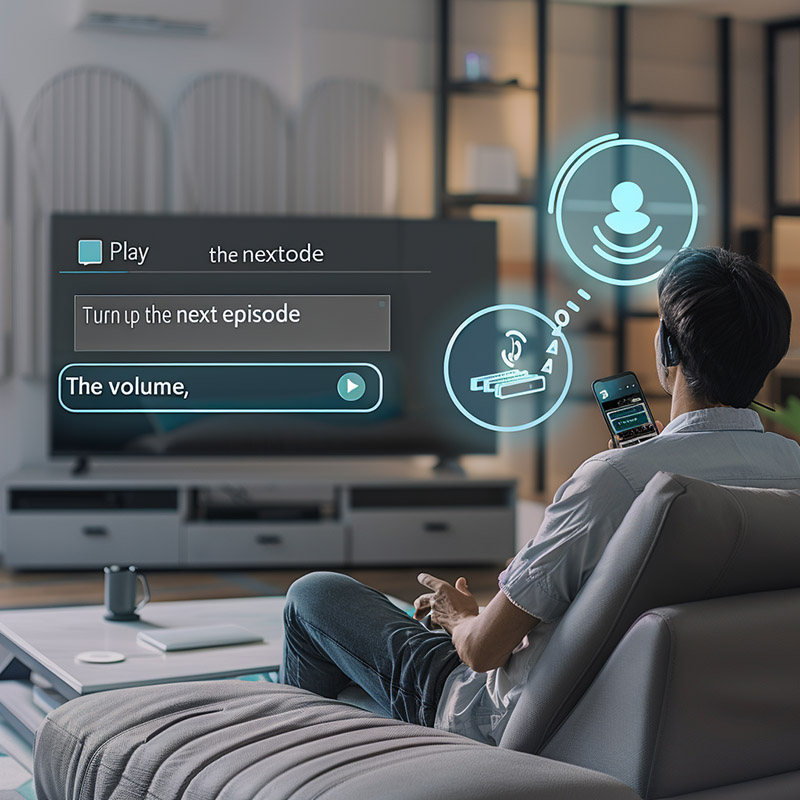
Controls Before AI
Navigating content libraries, adjusting settings, and searching for specific shows or movies required manual input, often through cumbersome on-screen keyboards or complex remote controls, slowing down the interaction and making the process less intuitive.
Controls After AI
Voice-activated controls powered by AI have made content navigation and system interaction effortless and hands-free. Viewers can now use natural language to control their TV, search for content, and manage playback settings, making the viewing experience more accessible and convenient for everyone.
7. Real-Time Language Translation and Subtitling
AI enables instant translation of foreign-language content, including real-time subtitling and dubbing, making a vast array of international content accessible to global audiences.
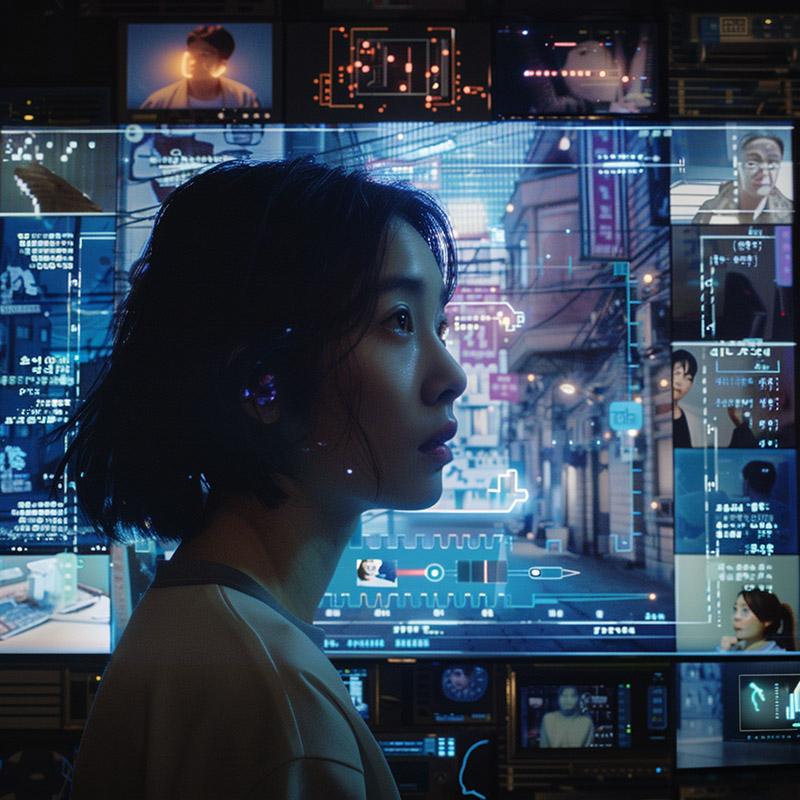
Translation Before AI
Watching foreign-language content was limited by the availability of subtitles or dubbings, which could delay or restrict access to international shows and films. This barrier made it difficult for non-native speakers to enjoy a broader range of content.
Translation After AI
AI-driven real-time language translation and subtitling break down language barriers, making international content instantly accessible to global audiences. Viewers can now enjoy shows and movies in their preferred language, with AI providing accurate, real-time subtitles or dubbing, enriching the content library with diverse cultural and linguistic offerings.
8. Interactive and Immersive Viewing Experiences
AI integrates with virtual and augmented reality technologies to offer interactive content, transforming passive viewing into immersive experiences where viewers can engage with content in novel ways.

Interactivity Before AI
Television viewing was a passive experience, with viewers simply watching content without the opportunity for interaction or immersion. This limited the ways in which content could engage and entertain audiences, especially in an era of increasing demand for interactive and engaging media.
Interactivity After AI
AI integration with virtual and augmented reality technologies has transformed TV viewing into an interactive and immersive experience. Viewers can now engage with content in novel ways, from choosing story outcomes to exploring content-related environments, making the viewing experience more engaging and personalized.
9. Smart Home Integration
AI enables televisions to act as central hubs for smart home devices, allowing viewers to control lighting, thermostats, and other connected devices directly from their TV screen for a seamless home entertainment environment.
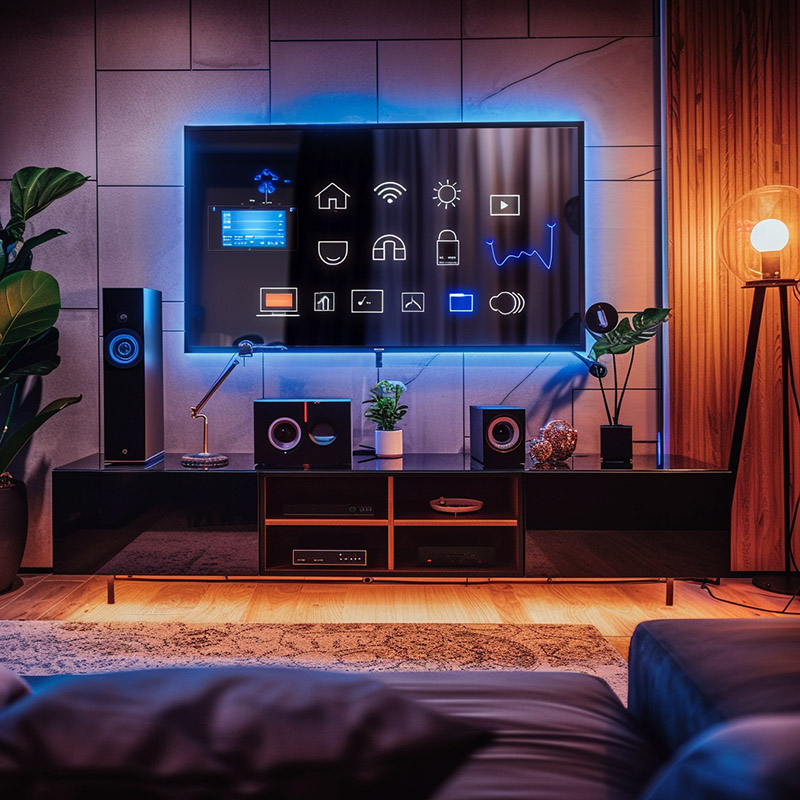
Home Control Before AI
Managing smart home devices required separate apps or control panels, often disjointed from the television viewing experience. This separation made it cumbersome to control lighting, security, and other smart home features while enjoying content.
Home Control After AI
AI-enabled televisions now serve as central hubs for smart home devices, allowing viewers to control their environment directly from the TV interface. Whether adjusting lighting to create the perfect viewing ambiance or monitoring security cameras, smart home integration enhances convenience and comfort, enriching the entertainment experience.
10. Predictive Maintenance and Troubleshooting
AI anticipates potential issues with the television hardware or software, offering preemptive troubleshooting advice and alerts to prevent disruptions, ensuring a consistently high-quality viewing experience.
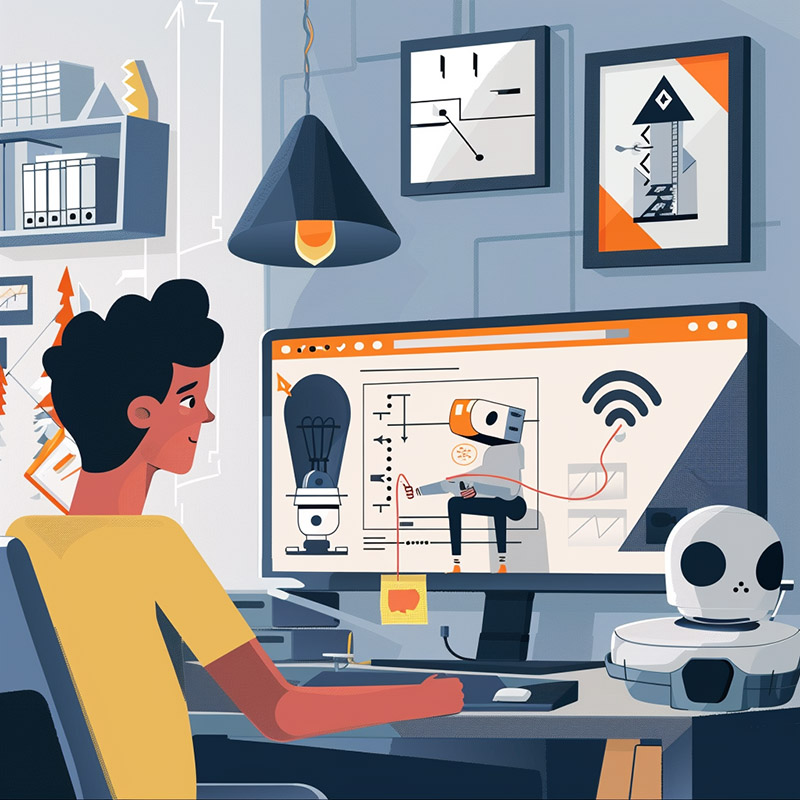
Troubleshooting Before AI
Technical issues with television hardware or software were often reactive surprises, requiring time-consuming troubleshooting or professional assistance, leading to frustration and interrupted viewing experiences.
Troubleshooting After AI
AI-driven predictive maintenance and troubleshooting preemptively identify potential issues with television systems, offering solutions or alerts before problems disrupt viewing. This proactive approach ensures a consistently high-quality viewing experience, minimizing downtime and enhancing viewer satisfaction.